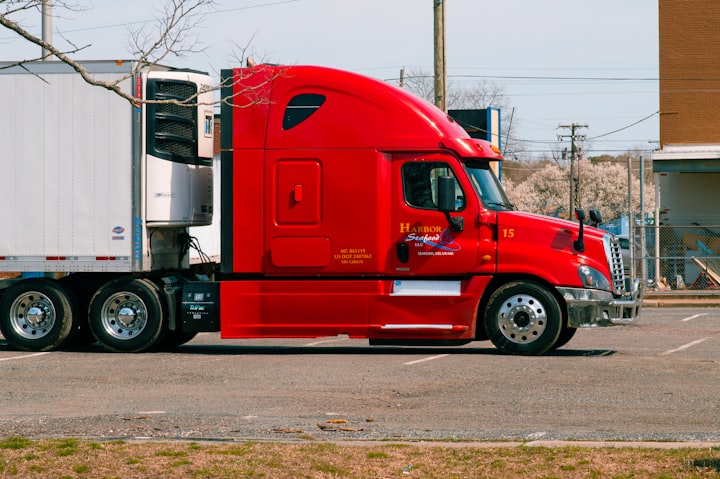How technology is shaping the future of transportation
How technology is shaping the future of transportation
Transportation is undergoing a rapid transformation as technology continues to advance, and the future of transportation is looking more and more different than it has in the past. In this article, we will explore how technology is shaping the future of transportation, and discuss the opportunities and challenges that this transformation brings.
One of the most significant ways that technology is shaping the future of transportation is through electric vehicles (EVs). Electric vehicles are powered by batteries and produce zero emissions, making them a more environmentally friendly alternative to traditional gasoline-powered vehicles. Additionally, as battery technology improves and charging infrastructure expands, the range and affordability of electric vehicles are also increasing. This means that more people will have access to electric vehicles and will be able to use them for longer trips, which could greatly reduce emissions from transportation.
Another way that technology is shaping the future of transportation is through autonomous vehicles. Autonomous vehicles are vehicles that can drive themselves without human input. This technology has the potential to greatly improve safety on the roads, as well as increase efficiency and reduce congestion. Additionally, autonomous vehicles can be used for ride-sharing and other transportation services, which could greatly reduce the number of cars on the road and decrease emissions.
Technology is also shaping the future of transportation through connected vehicles. Connected vehicles use wireless communication to share information with other vehicles and with infrastructure, such as traffic lights and road signs. This technology can help to improve safety, reduce congestion, and improve traffic flow. Additionally, connected vehicles can be used for ride-sharing and other transportation services, which could greatly reduce the number of cars on the road and decrease emissions.
Technology is also impacting the future of transportation through the development of new transportation infrastructure, such as hyperloop and maglev systems. Hyperloop systems use high-speed trains that travel in vacuum-sealed tubes, while Maglev systems use magnetic levitation to allow trains to travel at incredibly high speeds. These technologies have the potential to greatly reduce travel times, which could make it possible for people to live further away from their workplaces.
However, the transformation of transportation brought by technology is not without its challenges. One of the biggest challenges is the potential for job loss as a result of automation. As autonomous vehicles and other technologies become more prevalent, many jobs that currently exist in the transportation sector may become obsolete. Additionally, the transition to electric vehicles and other new technologies could also lead to significant changes in the way that energy is produced and consumed, which could have a significant impact on many industries.
In conclusion, technology is shaping the future of transportation in a number of ways. Electric vehicles, autonomous vehicles, connected vehicles and new transportation infrastructure are all technologies that have the potential to greatly reduce emissions, improve safety and increase efficiency. However, the transformation of transportation brought by technology also brings a number of challenges, such as job loss and changes in energy production. It is important to consider these challenges and work to find solutions, so that the future of transportation can be a sustainable and equitable one for all.
Another way technology is shaping the future of transportation is through the use of drones and unmanned aerial vehicles (UAVs). Drones can be used for a variety of transportation-related tasks, such as package delivery, search and rescue, and even passenger transportation. Drones have the potential to greatly reduce emissions by providing a more efficient and lower-carbon alternative to traditional transportation methods. Additionally, drones can also be used to inspect and maintain infrastructure, such as bridges and roads, which can lead to cost savings and reduce the need for human workers to work in dangerous conditions.
Technology is also shaping the future of transportation through the use of smart cities and smart transportation systems. Smart cities use technology to collect and analyze data in order to improve transportation efficiency and reduce congestion. This can be done through the use of sensors, cameras, and other technologies to gather data on traffic flow, parking availability, and other transportation-related information. This data can then be used to optimize traffic lights, adjust parking prices, and even reroute traffic in real-time. This can greatly improve the efficiency of transportation systems and reduce emissions by decreasing the amount of time that cars spend idling in traffic.
Lastly, technology is shaping the future of transportation through the use of blockchain technology. Blockchain technology can be used to create secure and transparent ledgers of transportation-related information, such as vehicle usage, maintenance records, and carbon emissions. This can greatly improve transparency and accountability in the transportation industry and help to ensure that transportation systems are operating sustainably. Additionally, blockchain technology can also be used to facilitate the use of electric vehicles by allowing for the secure and efficient transfer of payments for charging and maintenance services.
In conclusion, technology is shaping the future of transportation in a number of ways. Electric vehicles, autonomous vehicles, connected vehicles, new transportation infrastructure, drones, smart cities and blockchain technology are all technologies that have the potential to greatly improve the efficiency, safety and sustainability of transportation systems. However, the implementation of these technologies also brings new challenges such as job loss, security concerns and privacy issues. It is important to consider these challenges and work to find solutions, so that the future of transportation can be a sustainable and equitable one for all.






Comments
There are no comments for this story
Be the first to respond and start the conversation.